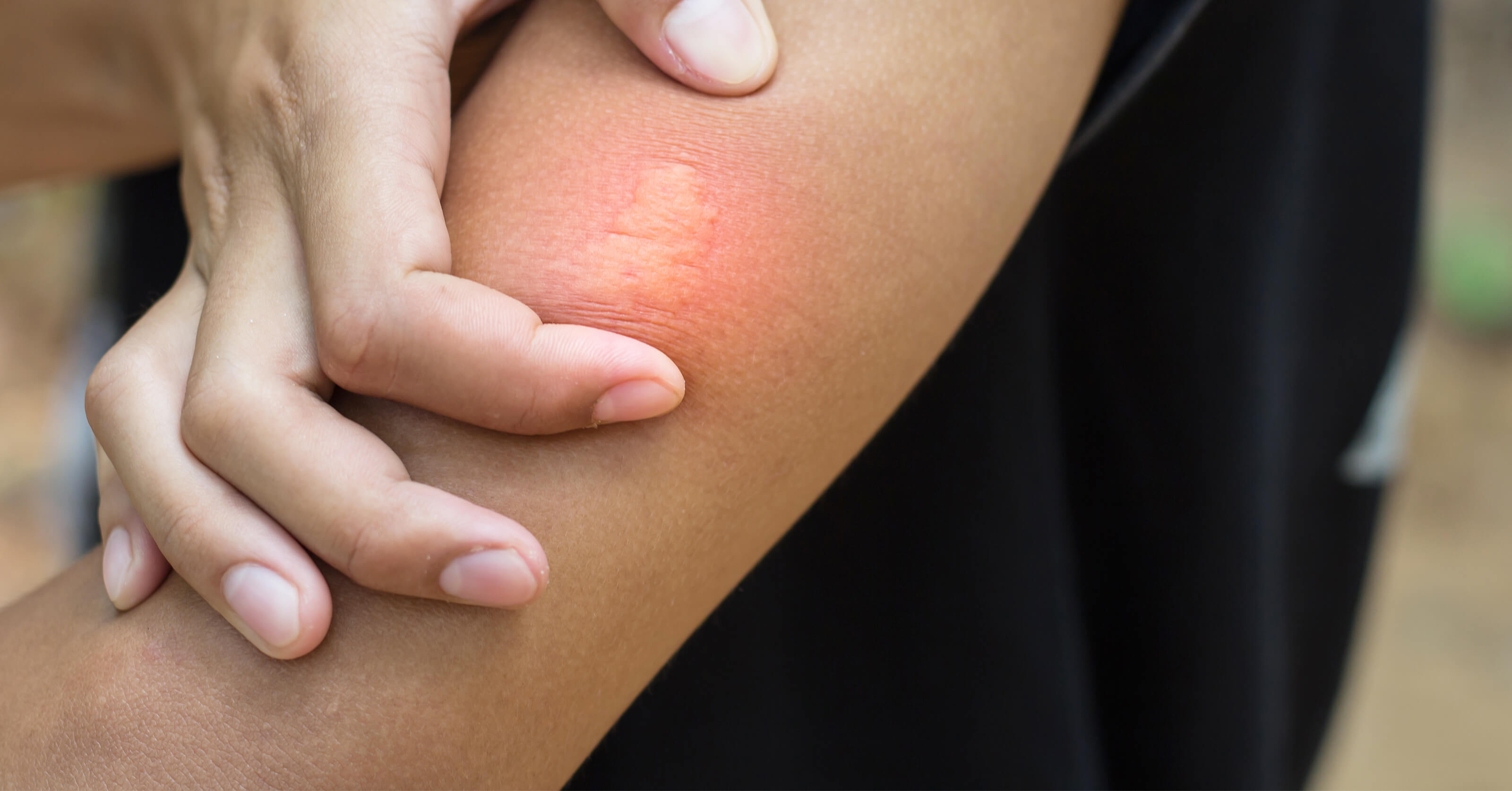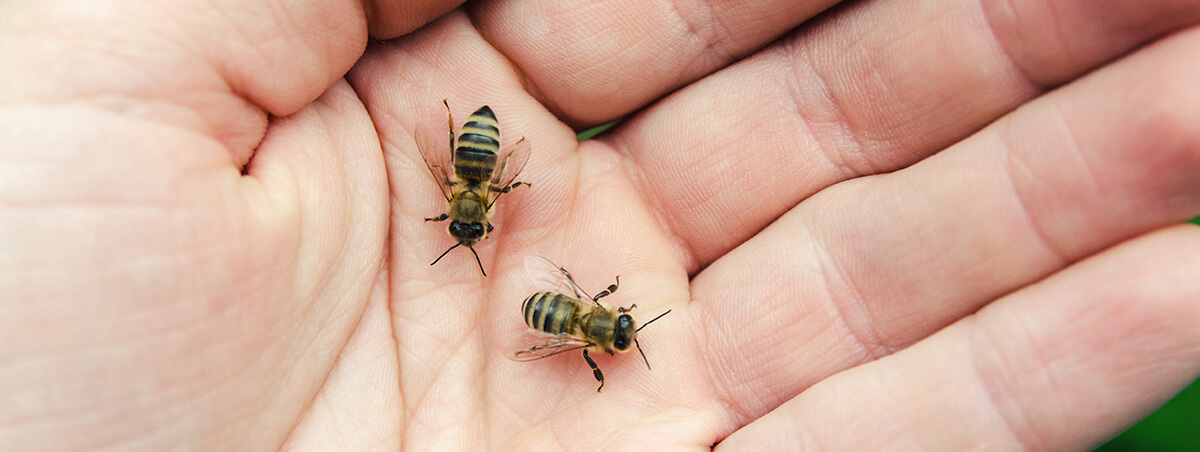The Truth about Pest Allergies

For 3% of adults, bee stings are a medical emergency. People in the United States die every year from severe bee-sting induced anaphylaxis (a condition where one’s airway swells shut). These types of terrifying allergies should be taken very seriously… but they aren’t the whole story.
Insect allergies can take many forms in varying degrees of severity. In fact, that tiny bump you get from a mosquito bite is actually a small allergic reaction. In order to understand the many manifestations of pest allergies, it’s important to have a good grasp on allergies in general.

What is an allergic reaction?
Allergic reaction is a blanket term for the body’s overreaction to any substance… basically a fancy way of saying “immune system gone rogue”.
Your immune system’s white blood cells identify potential allergens by the specific microscopic proteins on their surface called antigens. If the white blood cells deem an allergen dangerous (even if it isn’t), they signal the production of antigen-specific antibodies. These antibodies—known as immunoglobulin E (IgE)—bind to the antigens, basically detaining the allergens until the body can flush them out.
Once IgE proteins latch onto the allergens, more immune-response players, called mast cells, activate and release histamines which set off the inflammatory responses responsible for hives, swelling, and anaphylaxis.
Your body files away these IgE antibodies so future exposures to these silly little allergens may unfortunately cause even worse reactions.
This complicated process is essential in fighting off disease and keeping us healthy, but it’s pretty irritating when your body mobilizes the troops for a harmless bit of pollen.

There are different types of allergic reactions.
Most reactions are pretty minor, like the swelling and itchiness caused by our mosquito visitors. These annoying bumps may hang around for anywhere from a couple hours to a couple weeks.
Thank you very much, inflammatory response.
More allergy symptoms may include:
- Red spots
- Hives
- Watery, swollen, or itchy eyes
- Lightheadedness or fainting
- Rapid or weak pulse
- Nausea
- Vomiting
- Diarrhea
- Coughing or wheezing
- Tight throat
- Difficulty breathing
If you experience some of the more serious symptoms on the list, it’s a good idea to consult a doctor or allergy specialist. If you have a bad reaction to a first-time bee sting, you have a 30-60% chance of anaphylaxis the next time around.
While that’s a pretty frightening thought, immunotherapies can help. Talk with your doctor to decide what’s right for you.

Certain bugs are more likely to cause allergies.
There are actually three main types of allergy-causing pests: stinging insects, biting insects, and household pests. The residents of the stinging pest category are potentially the most dangerous. These tiny terrors include bees, hornets, wasps, yellow jackets, and fire ants.
Oh and on top of the inflammatory torture they incite, these stingers inject you with toxins that hurt—a lot.
Less serious allergy-inducing pests are mosquitos, fleas, bedbugs, and some flies (the most common biting insects to cause reactions). They usually leave you with nothing more than an itchy bump—rarely are they life-threatening.
Last but not least are the household pests: dust mites and cockroaches. These disgusting bottom-feeders are more likely to cause asthma attacks than the other pests, so watch out for that as well.

You can take steps to prevent insect-triggered allergies.
Preventing bug bites basically comes down to common sense. When hiking or walking in grass, wear close-toed shoes and aim to cover up as much exposed skin as possible. Avoid attracting insects by keeping food properly contained, skipping perfumes or other scented products, and teaching your children to be cautious around shrubs, trees, large rocks, standing water, and piles of wood. And obviously don’t disturb any nests or hives—that’s a surefire way into a bad situation.
Insect repellent can help as long as you know you’re not allergic to it. A reaction to bug spray would be tragically ironic. You can manage pest activity on your own property through a regular pest control service (because who wants to have to use bug spray to play in their own backyard?).
Thankfully, most allergic reactions are mild. However, it’s smart to know what pests and symptoms to look out for—especially when it comes to children. Kids are often being exposed to these bugs and their associated antigens for the first few times, so being alert is a good way to protect your family. If you have any questions about specific bugs or are interested in a pest service for your home, give us a call… we’re here to help keep your home and family safe.
Sources: https://www.aafa.org/insect-allergy/ https://www.stanfordchildrens.org/en/topic/default?id=insect-stings-and-allergic-reactions-90-P01691 https://www.ncbi.nlm.nih.gov/pmc/articles/PMC1961691/ https://www.betterhealth.vic.gov.au/health/ConditionsAndTreatments/allergies-to-bites-and-stings https://kidshealth.org/en/parents/sting-allergy.html https://www.mayoclinic.org/diseases-conditions/bee-stings/symptoms-causes/syc-20353869 https://www.aaaai.org/conditions-and-treatments/library/allergy-library/stinging-insect-allergy

